Mastering Rotational Movements: Building Proficiency in all Planes of Motion Involved in Rotation!7/23/2018 In the past I have talked briefly about how the planes of motion are involved in swinging and throwing, but this time was spent mostly on building rotational power. I have realized that the knowledge of the roles each plane has in rotational movements such as swinging and throwing is invaluable. We all train for elite rotational ability, and why not? The ability to rotate powerfully, efficiently and effectively is key to a pitcher or hitters success. This can also go far beyond baseball (I am looking at my hockey athletes). I am not going to get into specific detail/mechanics on the timing of rotation, how much you should rotate etc. (I will leave that to pitching, hitting and hockey specific coaches), but I will aim to help coaches, players and strength coaches alike understand each plane and show them how to build strength and power in those planes. Ultimately, this comes down to an understanding and willingness to program exercises and movements in the frontal, sagittal, and anterior/posterior. Once we do this, we can unleash the proficiency we have gained in these planes as one fluid transverse (rotational) movement and then add means to make these rotational movements more powerful! The Frontal Plane The frontal plane, sometimes known as the coronal, involves lateral movements. Essentially, the frontal plane encompasses lateral movements that do not cross the midline of the body. For example, when the left leg moves directly to the left or the right leg directly to the right. You can already begin to realize the importance of this plane when it comes to swinging or throwing. If you are striding towards the pitcher when you swing or driving towards home plate you are moving in the frontal plane. [See Photo 1A. At Bottom] [See Photo 1B. At Bottom] With the pictures above, you can see how the frontal plane is utilized in both swinging and throwing. When a pitcher takes his lead leg towards home plate in his delivery or a hitter strides, the frontal plane is involved. In terms of my favorite ways to build strength and power in this plane, here are two exercise variations.
The Sagittal Plane The sagittal plane involves movements, which cross the midline of your body. Think of the sagittal plane in terms of the lead leg crossing the midline (imaginary line down the naval and spine splitting the body into halves) upon loading and then crossing back over during the transition towards the plate/pitcher (when swinging). The adductors (towards midline) and abductors (away from midline) are huge here! [See Photo 2A. At Bottom] As you can see in the photo above, the lead leg crosses the midline (adductors in use) as the pitcher approaches his balance point, and then crosses back over (abductors in use) as he works towards the plate. In addition, you will see the adductor of the back leg work (see photo of Aroldis Chapman below) due to the body working towards home plate and placing emphasis of the rear leg adductor towards the body’s midline. [See Photo 2B. At Bottom] Both the abductors and adductors are in heavy use here. In terms of exercises, I love crossover step-ups and lateral crossover sled drags here! You can implement lesser loads and faster steps for the sled drags to work power in this plane!
The Importance of Anterior Core Strength If you are reading this I would only assume that you know the importance of unilateral exercises working anteriorly (in front of you) and posteriorly (behind you). This can include lunges, split squats etc. Bottom line, if you do not already incorporate unilateral exercises in your programs you must!! After all the photos you have seen already it should be pretty obvious that unilateral (single leg) strength is imperative for rotational movements! With that being said, I want to discuss anti-rotational core strength, and core strength anteriorly (in front of you). Essentially, anti-rotational core strength makes for more tight and powerful rotation. Think of your hips as an axis, and anterior core strength is the axis perpendicular to your hips. I am going to quote a previous article I have written that details this: “After the body frontally loads, rotation takes place. Newton’s third law also applies here. Torque is the initial movement required to produce rotation. The greater the force perpendicular to the axis upon which something rotates, the greater the torque needed to produce rotation. Essentially, if a pitcher rotates into their initial frontal load, their hip is the axis point upon which they are rotating. Core strength anteriorly (in front of the body) is what resists this rotation and will require more torque be placed to cause rotation. As we now know thanks to Newton’s third law, higher forces placed into torque will produce higher forces back into rotation. “ [See Photo 2B. At Bottom] To keep it simple: The stronger your body is in terms of resisting rotation the more power it will have to display to cause rotation. What is the lesson here? Program as many anti-rotational exercises into your training as you do rotational work!
One Fluid Transverse (Rotational) Movement Now that we have built up frontal and sagittal strength and power and developed a strong and stable core we can rotate effectively. Effective rotation not only involves power in rotation itself, but mobility in the thoracic spine (mid-back), shoulders and hips. So, above all else do not neglect your mobility work in all ranges of motion. With that being said, we build rotational power by simply rotating! It’s not very complicated. You get better at rotating by rotating often in your training. My philosophy is simple. Build a foundation of frontal and sagittal strength and power and pair them with a strong anterior core. Once that is done we rotate as powerfully and rapidly as possible.
Adding Movement/Power This is the last step! We can now add weight shifts and perform full movements. In addition, we can add counter movements (hops or jumps prior to throws) to help build more power prior to throws. The main goal here is to add movements that force the athlete to move their weight across all involved planes. For example, a rocking action prior to a throw forces the athlete to shift their weight and transfer it through the frontal plane as they perform their throw.
Now that you see all the planes involved in rotational movements you can better understand how to develop your own programming for your training. Build a solid base in these planes of motion and then place them together for powerful rotational ability!
2 Comments
|
AuthorSGerry DeFilippo: ISSA CPT- CPPS, AAPS. Founder/Owner: Challenger Strength. Archives
October 2020
Categories
All
|
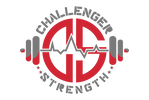
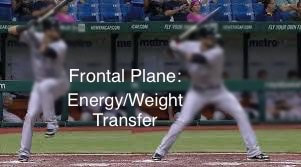
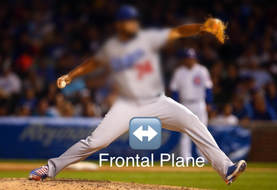
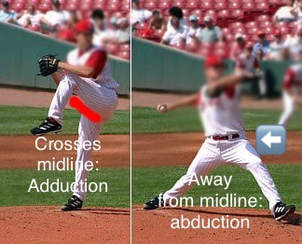
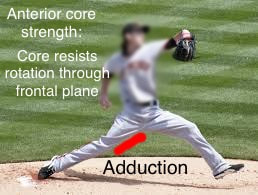
 RSS Feed
RSS Feed